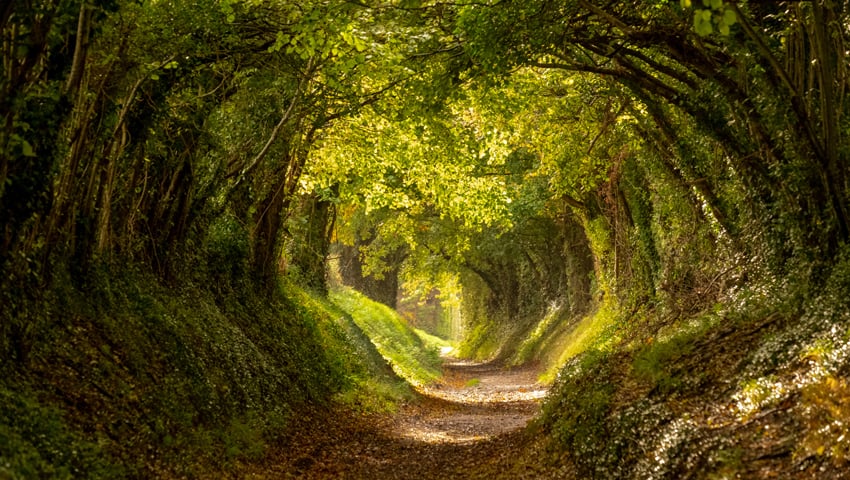AN ONLINE map which for the first time shows disparities in urban tree cover across the UK shows how less affluent areas have fewer trees and are missing out on their essential health benefits, like cleaner air.
Neighbourhoods with the highest income levels have more than double the tree cover per person than less affluent neighbourhoods, and they have nearly 20% less of the toxic pollutant nitrogen dioxide (NO2).
In England, regional differences are present, with the 10 local authorities with the highest scores in the south and the 10 with the lowest scores in the north. Some coastal areas also have lower levels of tree cover.
The news comes with the launch of a free interactive tool known as Tree Equity Score, which uses new tree canopy data from Google and six climate, health and socioeconomic indicators to generate a score from 0 to 100 for most urban neighbourhoods in the UK. It shows that, in areas of lower tree cover, there is a direct link to more pollution and poorer air quality.
The Woodland Trust encourages everyone to find the Tree Equity Score for their area and urges governments – nationally and locally – to integrate the Tree Equity Score into policies and plans, to ensure this disparity is tackled.
First launched by American Forests in the US in 2021, Tree Equity Score has just launched in the UK in a partnership between American Forests, the Woodland Trust and the Centre for Sustainable Healthcare. The UK is the first country that Tree Equity Score has expanded to.
Dr Darren Moorcroft, CEO at the Woodland Trust, said, “This is a breakthrough moment for trees in the UK. For the first time everyone can see an inequity that is hidden in plain sight – access to the essential benefits of trees. Tree Equity Score shows that there are major differences in levels of tree cover between neighbourhoods and that these often follow socio-economic trends. Tree Equity Score is a tool for action to start addressing this inequity and ensure the essential benefits of trees can improve public health and climate resilience for all.
“More than 34,000 urban neighbourhoods are covered by Tree Equity Score, meaning that nearly 80% of the population can go online and find their score.
“There are numerous underlying reasons for tree inequity, and it is a serious problem in need of immediate solutions. We believe the tool will inspire people to get involved with local projects to plant and care for urban trees. We are calling on national and local governments to integrate tree equity into national and local policies and plans, and to fund and recruit more tree officers to address tree inequity.”
The UK Tree Equity Score reveals disparities including:
- Neighbourhoods where tree cover per person is highest have roughly 30% less NO2 pollution and 10% less particulate matter pollution than neighbourhoods where tree cover is lowest
- UK-wide, neighbourhoods with the highest income levels have more than double the tree cover per person than less affluent neighbourhoods and have nearly 20% less nitrogen dioxide (NO2) air pollution
- Lower tree cover has a dramatic effect on neighbourhoods: for example, those with the highest number of trees have up to 330% less air pollution and are four degrees Celsius cooler during a heat wave than neighbourhoods where tree canopy is lowest
- UK-wide, neighbourhoods with fewest people identifying with minority ethnic groups have roughly double the tree canopy per person than neighbourhoods with the most, and experience 50% less NO2 air pollution, 20% less particulate matter (PM2.5) air pollution and are five degrees Celsius cooler
- In the UK, a number of cities are already adopting Tree Equity, including Birmingham and Belfast, which have recently included actions on tree equity in city-level plans to increase tree cover. The tool will also be demonstrated at COP28, the UN climate conference on 8-9 December in the United Arab Emirates, with the goal of encouraging more cities across the globe to adopt the tool.
Find your neighbourhood’s Tree Equity Score
